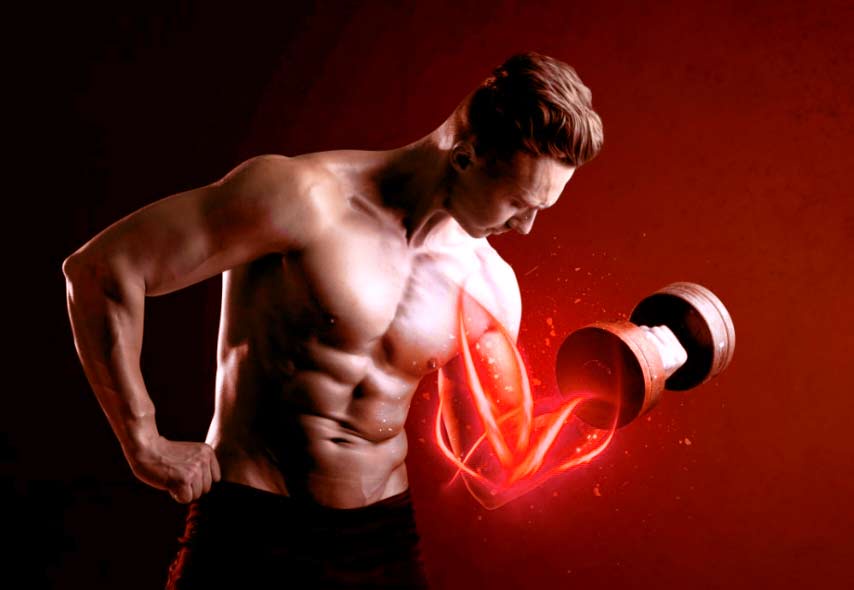The importance of muscle rehabilitation is not limited to professional athletes. Like a car's transmission is essential to its operation, so too are your muscles to your body. Simply said, it's what enables you to go places and accomplish things. Muscles are essential for everything from fundamental movements like walking to complex feats like Olympic-level athletic performances. Nonetheless, discomfort and pain might reduce physical output.
Evidence is growing that light treatment can have a significant impact on muscle repair. Perhaps it can also speed up the process of muscle development, allowing you to get your desired results more quickly. In the following paragraphs, we will discuss what light therapy is, how it works, and why you might need to incorporate it into your daily routine if you are experiencing muscle pain.
Muscle Pain and Soreness: What Is Going On
Overstressing your muscles during exercise can lead to microscopic rips in the tissue. To protect itself from further harm, your body triggers an inflammatory reaction, which results in pain and other unpleasant symptoms. That's why you feel sore and exhausted after a longer, more strenuous workout. Particularly for individuals just starting with fitness or those increasing their training volume in advance of an event, this pain can be so intense that it prevents you from continuing until it subsides.
That's never a good idea because it always results in a decline in health and stamina, causing you to regress twice as far as you advance. There is promising preliminary research suggesting that light treatment can put an end to that agony immediately. Plus, it's feasible to avoid the aches and pains that come with a hard workout in the first place by taking measures to reduce the stress on your muscles.
The role of muscle tissue in the body
Understanding how muscle tissue works are essential before discussing how red light therapy might aid in muscle healing and growth. Although muscle cells function similarly to other types of cells in the body, they differ in important ways due to the unique characteristics of muscle tissue and the stress placed on them daily.
To begin, muscle tissue must be capable of generating enough energy to power both brief bursts of high-intensity exercise and longer periods of low-intensity activity. They require energy for quick bursts of speed as well as sustained performance over a long distance. There is a huge difference in the physical effects of these two forms of running.
Muscle cells have more mitochondria than other types of cells because of their high energy demands. All cellular processes require energy, and mitochondria supply that energy in the form of ATP. As a general rule, this is true of all skeletal muscles. The lengthy muscles of the arms and legs are not the only ones we're considering. This includes your heart's smooth muscle as well as your skeletal muscle and other internal organs' smooth muscle.
Muscles respond especially well to light treatment because of its substantial effect on the mitochondria within the cells of the body.
Exploring the Depths of Pain Reduction and Enhanced Muscle Performance
Muscle cells can accomplish more than only increase energy and efficiency as a result of infrared and red light therapy has the ability to boost function. They help the body recover from injury more quickly and with less inflammation, which in turn lessens or eliminates pain and increases mobility. Muscle weariness is directly related to oxidative stress, which can be reduced by increasing the body's ability to produce antioxidants in response to red and infrared light. One more significant function of antioxidants is to protect cells from premature death caused by stress.
There is evidence that treatment with red and infrared light (which are also invisible) can also boost circulation. Athletes know that increased blood flow means their muscles get more oxygen, get more of the nutrients and minerals they need, and have less of the toxins like lactic acid that can sap their strength.
How Light Therapy Can Help You Avoid Muscle Pain
This article has discussed how light therapy can be used to reduce muscular fatigue and enhance performance. On the other hand, it can be used to keep aches and pains at bay. Researchers in 2014 conducted a double-blind study showing that people who exercised while also receiving light therapy saw significant improvements compared to those who received neither treatment. Among these were:
- Decreased incidence of DOMS
- Greater mobility
- Muscle stiffness is decreased
Participants who received red light therapy before engaging in intensive physical exercise improved performance experienced less discomfort afterward, and avoided musculoskeletal damage altogether, according to the results of a separate research conducted the same year.
What Should One Anticipate from Light Therapy?
Several beneficial effects can be gained from using light therapy before exercising. In this category are items such as:
- Reduced muscle fatigue and stiffness
- enhanced mobility and adaptability
- Reduced risk of muscle and bone breakdown
- Reduced knee, tendon, and leg muscle injury from running Reduced muscle and joint discomfort in postmenopausal women These positive effects last for up to four days following exercise.
- Protection of cells from inflammation
- Decreased blood lactate and creatine kinase levels
- Lower Serum C-Reactive Protein Levels


No comments yet